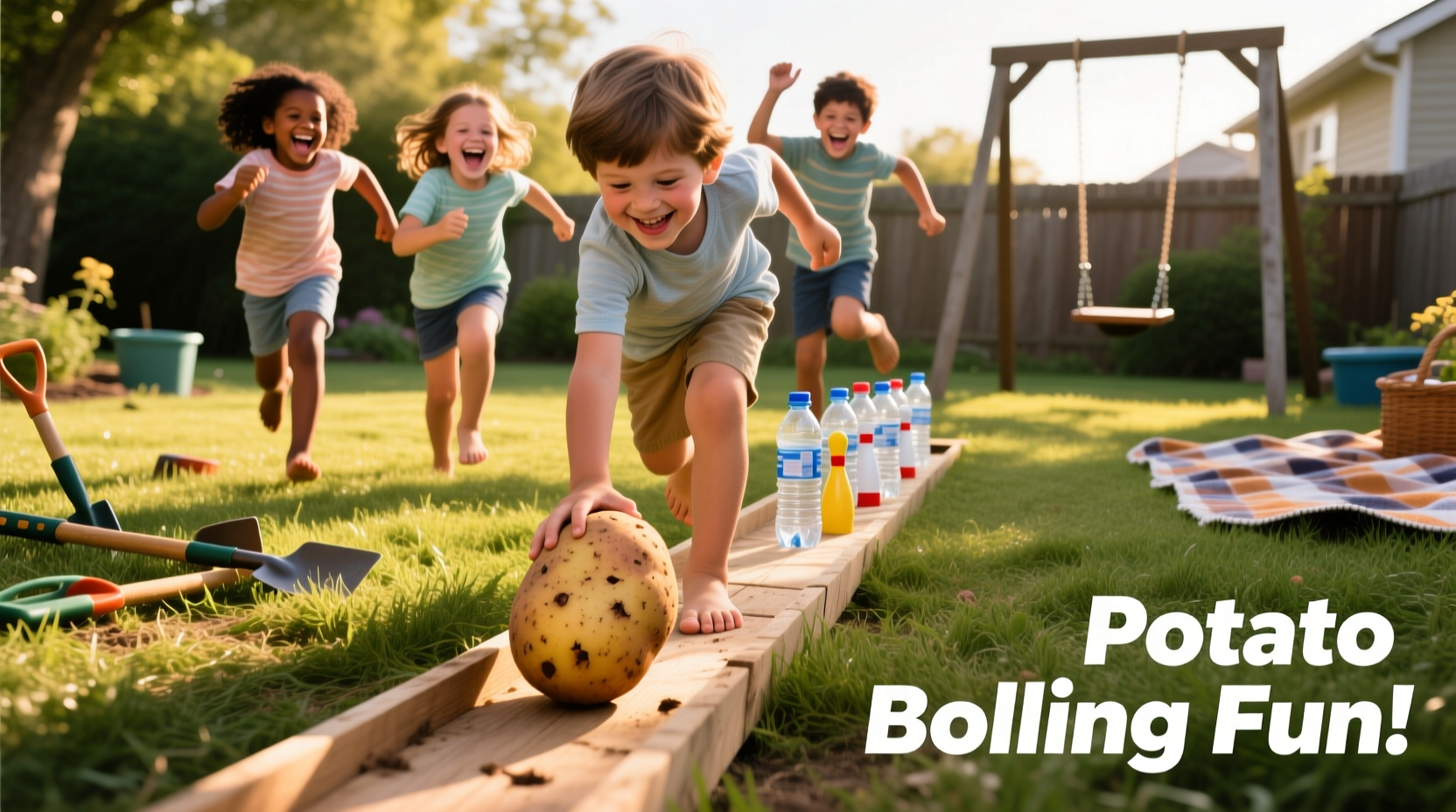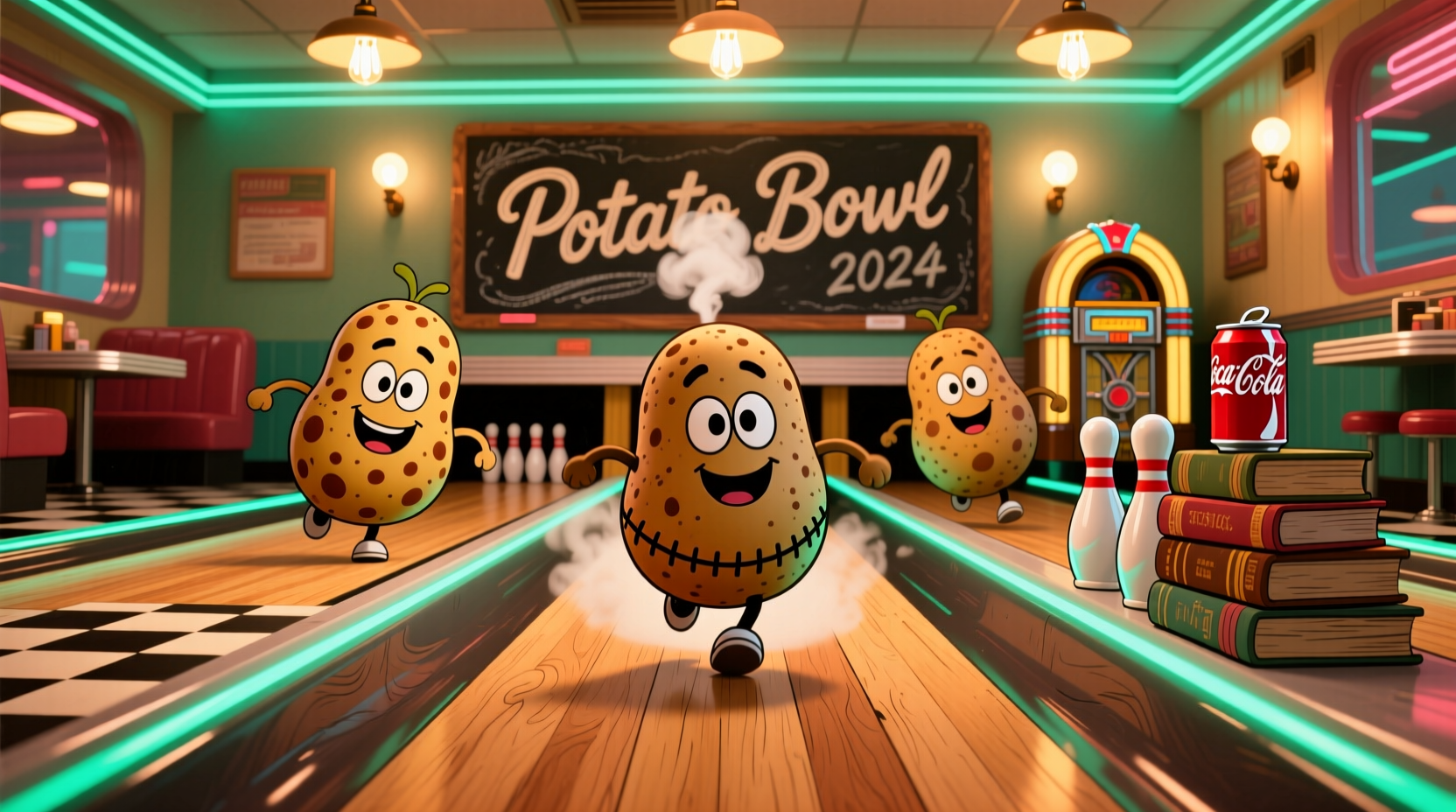Transform your backyard into a playful bowling alley with nothing more than potatoes and empty containers. This accessible game has entertained families for generations, particularly in rural communities where resourcefulness meets recreation. Unlike traditional bowling that requires specialized lanes and equipment, potato bowling offers an affordable, adaptable activity suitable for all ages that turns ordinary produce into rolling projectiles.
The Origins and Evolution of Potato Bowling
While not documented in formal sports histories, potato bowling emerged organically in agricultural communities worldwide as a form of improvised entertainment. Historical records from early 20th century farming communities in North America and Europe show children using harvested potatoes as natural bowling balls during harvest festivals. The game gained particular popularity in Andean regions where potatoes have been cultivated for thousands of years.
| Era | Development | Geographic Spread |
|---|---|---|
| Pre-1900s | Informal play using harvested potatoes | Andean regions, European farming communities |
| 1900-1950 | Organized into community games during harvest festivals | North American Midwest, European rural areas |
| 1950-2000 | Documented in children's activity books and 4-H programs | Widespread in North America, Europe |
| 2000-Present | Revived as eco-friendly backyard activity | Global interest through social media |
Why Potatoes Make Surprisingly Effective Bowling Balls
The science behind potato bowling's success lies in the tuber's natural properties. According to agricultural research from the International Potato Center, mature potatoes have an ideal density (approximately 1.08-1.12 g/cm³) that provides sufficient weight for momentum while remaining soft enough to minimize damage. Their slightly irregular shape creates unpredictable rolling patterns that add challenge to the game, unlike perfectly spherical commercial bowling balls.

Essential Equipment for Your Potato Bowling Setup
You'll need minimal equipment to get started:
- Potatoes: Russet or Yukon Gold varieties work best (2-3 inches in diameter)
- Pins: Empty plastic bottles (1L size) filled with 1/4 water for stability
- Lane: Flat grassy area or smooth pavement (20-30 feet long)
- Optional: Chalk or hose to mark boundaries
Avoid using overly large potatoes (over 4 inches) as they become difficult to control and increase safety risks. The Consumer Product Safety Commission recommends maintaining at least 15 feet of clear space behind players to prevent accidental throws toward spectators.
Step-by-Step Guide to Playing Potato Bowling
- Prepare your potatoes: Select 3-5 firm potatoes of similar size (about the size of a baseball)
- Set up the pins: Arrange 10 bottles in a triangular formation 20 feet from your starting line
- Mark boundaries: Use chalk or a garden hose to create a 3-foot wide lane
- Establish rules: Decide whether players get one or two rolls per frame
- Score keeping: Traditional bowling scoring applies (1 point per knocked-down bottle)
- Safety check: Ensure spectators stand at least 10 feet to the side of the lane
Adapting Potato Bowling for Different Age Groups
Tailor the game to suit various skill levels:
- Young children (3-6 years): Reduce distance to 10 feet, use larger pins (2L bottles), allow rolling from knees
- School age (7-12 years): Standard setup with 20-foot distance, introduce basic scoring
- Teen/adult players: Increase distance to 25-30 feet, add challenging elements like obstacles
- Group play: Create team competitions with relay formats
Safety Considerations for Responsible Play
While generally safe, potato bowling requires attention to potential hazards. The National Recreation and Park Association notes that 87% of backyard game injuries result from improper setup rather than the activity itself. Key safety measures include:
- Always use plastic bottles (never glass) for pins
- Avoid concrete surfaces which can cause potatoes to bounce unpredictably
- Supervise children under 10 years old during play
- Discard potatoes showing signs of rot or soft spots
- Maintain clear boundaries to prevent stray throws
Creative Variations to Enhance Your Game
Once you've mastered the basics, try these engaging twists:
- Color Challenge: Paint potatoes different colors and assign point values
- Night Bowling: Wrap bottles in glow tape for evening play
- Obstacle Course: Add small hurdles for potatoes to roll over
- Themed Events: Incorporate into harvest festivals or potato-themed parties
Environmental Benefits of This Sustainable Game
Potato bowling aligns with eco-friendly recreation principles. Unlike commercial bowling that consumes significant energy for lane maintenance and lighting, this backyard version creates virtually zero carbon footprint. The potatoes remain fully compostable after play, and repurposed containers eliminate waste. According to USDA agricultural studies, using imperfect or "ugly" potatoes for games rather than discarding them reduces food waste by approximately 15% in participating households.
Why Potato Bowling Endures as a Beloved Pastime
This simple game persists because it embodies fundamental elements of satisfying recreation: accessibility, adaptability, and connection to natural materials. Unlike digital alternatives, potato bowling encourages physical activity while fostering appreciation for everyday objects. The unpredictable roll of each potato creates unique challenges that keep the game fresh, while its low barrier to entry makes it inclusive for diverse abilities and economic backgrounds.
What type of potatoes work best for potato bowling?
Russet or Yukon Gold potatoes with a diameter of 2-3 inches provide the ideal weight and rolling characteristics. Avoid overly large potatoes as they become difficult to control and increase safety risks.
How much space do I need to set up a potato bowling lane?
You'll need a minimum of 25 feet of linear space (20 feet for the lane plus 5 feet for the approach). Allow additional space on the sides (at least 5 feet) for safety. A standard backyard typically provides sufficient room for a functional setup.
Can potato bowling be played on surfaces other than grass?
Yes, but smooth pavement works best. Avoid concrete as it causes unpredictable bouncing. Indoor play isn't recommended due to potential damage to floors and walls. Grass provides the most consistent rolling surface while minimizing damage to both potatoes and playing area.
What's the proper way to score potato bowling?
Traditional bowling scoring applies: 1 point for each knocked-down bottle. Players get two rolls per frame to knock down all 10 pins. A strike (knocking all pins down on first roll) earns bonus points equal to the next two rolls' total. Most casual players simply count total pins knocked down across 10 frames.
Are there any safety concerns with potato bowling I should know about?
The primary safety considerations include using plastic (not glass) containers for pins, maintaining proper distance from spectators (minimum 10 feet to the side), supervising young children, and avoiding overly large potatoes that become difficult to control. The Consumer Product Safety Commission recommends maintaining 15 feet of clear space behind players to prevent accidental throws toward spectators.











 浙公网安备
33010002000092号
浙公网安备
33010002000092号 浙B2-20120091-4
浙B2-20120091-4